
Shared reading, mark-making, conversations and language-rich play are at the heart of children’s emergent literacy skills. Dressing-up clothes and props can encourage children to act out and extend the stories they hear in their play, while focusing on meaningful print – such as a child’s name or icons on a weather app – can help convey to children that symbols have meaning, which is a precursor to later writing and comprehension skills.
‘Practitioners can model literacy in meaningful ways to ensure children’s interests are followed and they are motivated to read, write and talk about stories,’ explains early years consultant Caroline Eaton.
STORYTELLING
The foundations for literacy lie in early communication and language skills. Through gestures, talking, singing, playing, reading and writing, children are learning to express themselves and understand that words have meaning.
Storytelling is a powerful way to embed literacy skills into practice. Listening to stories not only introduces children to words they do not often hear in everyday speech, but it also gives them an awareness of sentence structure.
Penny Tassoni, early years consultant and president of Professional Association of Childcare and Early Years, says that a shared story between a child and a familiar adult has a ‘huge impact’ on children’s interest and motivation for reading later on.
She adds, ‘When reading with children, make eye contact; use your hands to make gestures; repeat words three times to encourage children to join in; repeat sentences, which is already done in some well-known books; and use different voices and tones to represent the characters in the book.’
Although practitioners should aim to encourage a lifelong love of reading by providing a variety of books throughout the setting– books of buildings in the construction area, cookery books in the home corner and books in different languages – Andy Burt, curriculum consultant for Early Excellence, says it is important ‘not to overwhelm them’ with too many choices. ‘Count the number of books you have available at any one time. Aim to display a smaller number of high-quality texts on purpose-made, forward-facing shelving units or bookstands: let the children be drawn to books by seeing them face-on,’ he suggests.
A low-level table with a book from a particular author or illustrator on display, enhanced with small-world resources, artefacts, or images, ‘works well’, he adds. ‘A writing area placed close by can encourage children to make the leap from reading a story to creating one.’
Books with limited or no print are also useful for helping children work through what the story might be and to develop their own ideas through the illustrations.
MAKING MARKS
Mark-making is a child’s first steps towards writing. It starts with a smear or squiggle and later emerges into a series of symbols that can be read and understood by others.
In the early stages of mark-making, it is important to providea wide range of materials for babies and toddlers to make marks with their hands and fingers, whole bodies and feet. Large sheets of paper, trays of gloop and paint, along with a range of different surfaces to make marks on – chalkboards, lightboxes, sand and pathways – will encourage children to have fun and make marks collaboratively.
Introduce a range of appropriate implements including large brushes, chalk and crayons, sticks and sponges for children to trace patterns and shapes. Encourage them to draw circles, lines and dots, or make large, small, hard, soft, quick and slow movements.
‘Try to weave it into your everyday provision,’ Eaton advises. ‘Encourage children to have a go at writing their name on paintings. When baking or cooking, allow them to write the shopping list. And if the children are role-playing mechanics, provide pens and writing boards so that they can tick off their work on a checklist.’
It is also important for children to see adults writing for a purpose: to make a shopping list, a message for parents, or labels in children’s play areas.
Artistic director Trisha Lee advocates the storytelling and storyacting approach through her Helicopter Stories programme, where children dictate their own stories to adults, who then write them down verbatim before the children gather to act them out.
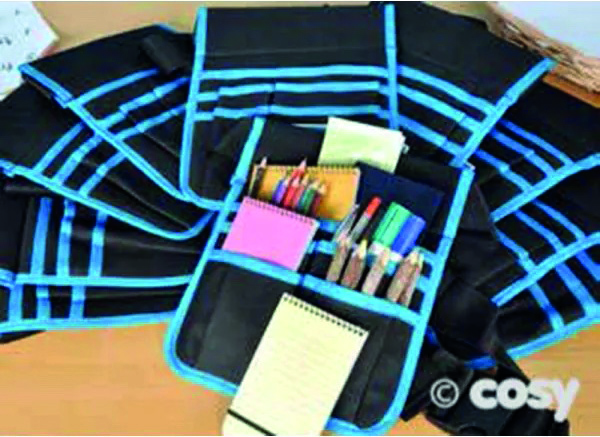
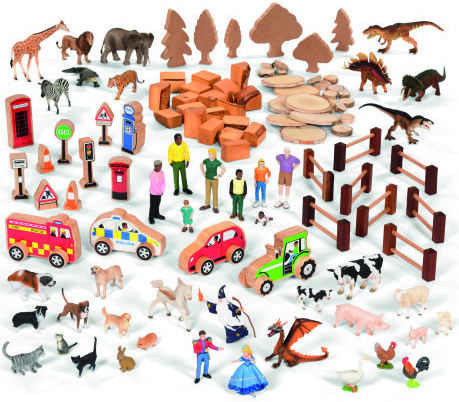
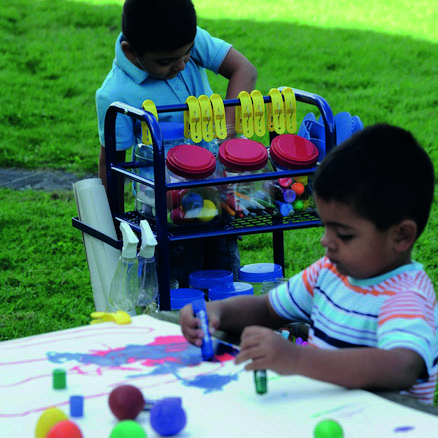
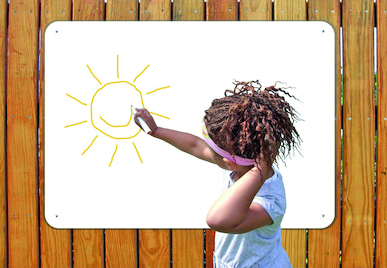
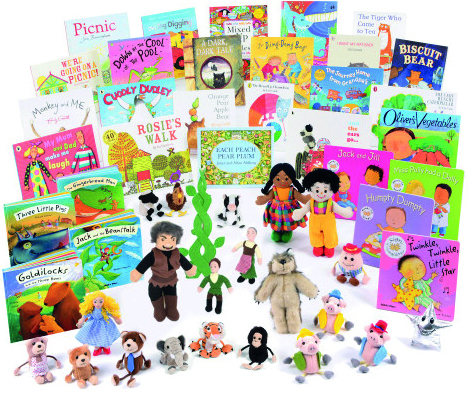
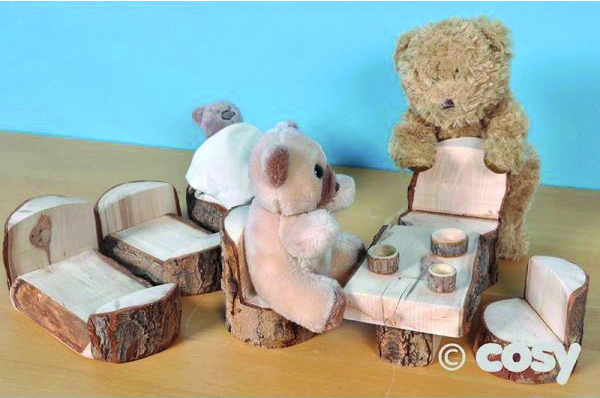
RESOURCES FOR LITERACY
- Books and storying
- Books & Puppets Resource Collection 3-4 years (Early Excellence), £375
- Travelling Tales: The Gruffalo (Hope Education), £132.99
- Discovery Stones from Hope Education – Goldilocks and the Three Bears, £19.99
- World Community Diversity Books 14pk (TTS), £159.99
- Creative Writing Tubs (TTS), £114.99
- Enriching Language through Fun with Sounds (TTS), £26.99
- Small World Resource Collection 3-4yrs (Early Excellence), £395
- Complete Domestic Role Play Area 3-4 yrs (Early Excellence), £1,595
- Let’s Roll – Forest Friends (Yellow Door), £15
- Mud Kitchen Process Stones (Yellow Door), £25
- Handa’s Surprise Story Talk Cards (Yellow Door), £12
- Handa’s Surprise Wooden Character Set (Yellow Door), £30
- Three Bears Rustic Role Play (Cosy), £19.99.
- Mark-making
- Easy Grip Chalks (Muddy Faces), £7.29
- Easy Grip Texture Wands (Muddy Faces), £5.24
- Silishapes Trace Alphabet (TickIt), £17.99
- A2 Mirror and Mark Making Set (TTS), £112.25
- Rainbow Glitter Letters (TickIt), £16.99
- Easy Access Mark Making Storage Centre (TTS), £275.99
- Feels Write Pre-Writing Stones (Yellow Door), £40
- A5 Natural Wipe Boards (Cosy), £17.99
- Writing Belts (Cosy), £15.99
- Blackboard Crate Writing Boards, 4pk (Cosy), £55.99
- Glow Writer Panel from Hope Education, £28.99.
CASE STUDY: Little Owls Childminding in Greater Manchester
 Zoe Eckersley, owner of the Curiosity Approach-accredited setting, has noticed that her current cohort of children are putting meaning to marks at a ‘much younger’ age. ‘If they draw a picture, they might say, “That’s Zoe’s house” or “That’s mummy”,’ she says.
Zoe Eckersley, owner of the Curiosity Approach-accredited setting, has noticed that her current cohort of children are putting meaning to marks at a ‘much younger’ age. ‘If they draw a picture, they might say, “That’s Zoe’s house” or “That’s mummy”,’ she says.
Eckersley puts this down to the rich literacy environment at the setting, linked with the strong family connections which are encouraging shared reading and communication at home. ‘A key focus of our literacy activities is on children’s sense of belonging,’ she explains. ‘Scrapbooks with environmental print of what’s in their immediate vicinity; photos from home and mini-me blocks, which are small wooden cubes with photos of the children and their home lives stuck on the sides. We find this helps children to engage in the learning because it’s more meaningful for them.
‘The younger children love to use the blocks in small-world play to recreate their own stories. They might take the block – which contains a picture of themselves and their dog – on a dog walk and go to the shops or on a train ride, and say, “I’m going home now.”
‘Older children create more elaborate stories with their blocks. They might go on a Bear Hunt and make a cave with a wicker basket, a wooden bridge or a cardboard box.
‘When we go out and about, they get excited when they spot signs or environmental print – the Tesco sign, the local library or road signs – that we have in our scrapbook.’
She uses imaginative ways to engage children in early mark-making and provides opportunities both indoors and out, including clipboards and pens and large-scale painting activities to get their muscle co-ordination ready for writing.
One 20-month-old child, a reluctant mark-maker who did not like to get messy with sensory materials, turned a corner after Eckersley attached some felt tip pens to the cars he enjoyed playing with. ‘He loved seeing the different-coloured marks the car made as he whizzed it around,’ she says. ‘We extended this by placing paper on upside down tables and letting the children draw on it, which sparks their curiosity. Outside, we attached cling film between two trees, provided poster paint and leaves and twigs for brushes and [the 20-month-old] loved painting onto the transparent cling film. I put my face the other side of the cling film and he painting it – and liked the fact that it was clean at the end.’
FURTHER INFORMATION
Enabling Environments on a Shoestring by Caroline Eaton
https://bit.ly/3NLjk1T
https://bit.ly/3XNCcSr
https://bit.ly/43dSKnH









